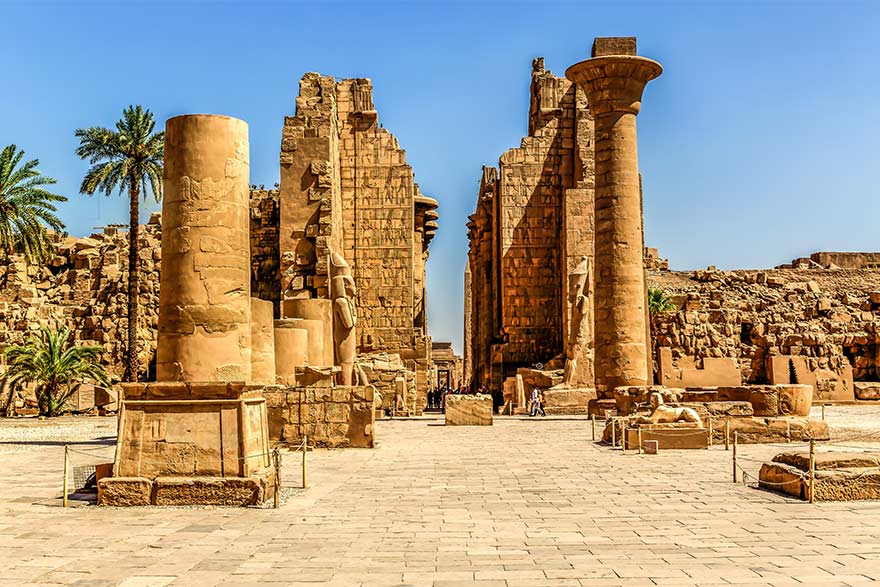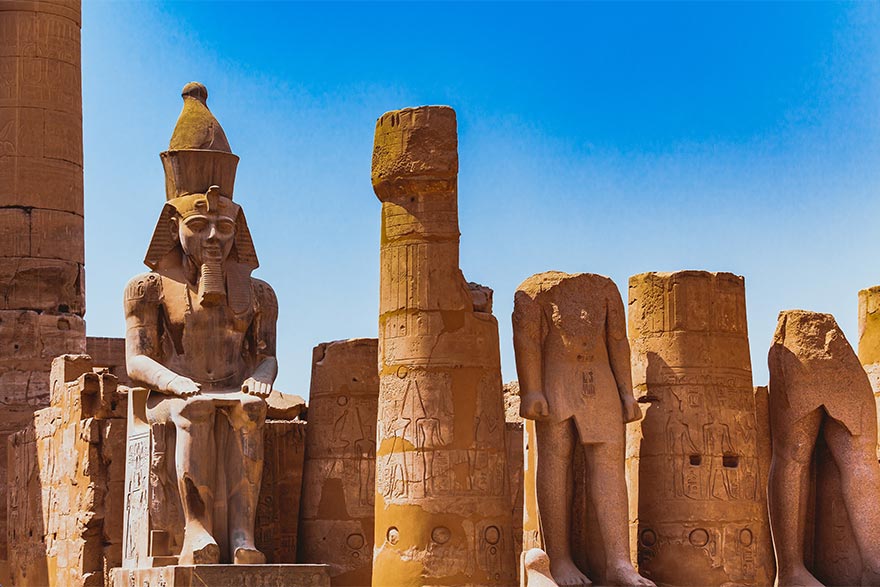In 2024 Windstar is launching a number of exciting new itineraries in the Middle East, half a dozen of which include a two-day tour of Luxor, Egypt. The tour includes access to several bucket-list sites like Luxor Temple, the Karnak Temple Complex and Valley of the Kings, which is home to King Tutankhamun’s famed tomb. The overnight tour departs from the port in Safaga and includes a stay at the Hilton Luxor Resort & Spa, plus all meals. The price is $999 per person for double occupancy or $1,099 per person for single occupancy, and this is booked as a shore excursion.
Some of the cruises that offer the Luxor tour include Wonders of Arabia, Arabian Nights and Egyptian Days, Petra, Pharaohs and the Red Sea Cruise Tour, Red Sea Revelries via the Suez Canal, Star Collector: Red Sea Medley and Suez Canal and Star Collector: Glory of the Red and Arabian Seas.
Here is a rundown of the itinerary, with more details about the sites you’ll visit:
Schedule and Logistics
After disembarking in Safaga, the drive to Luxor is approximately four hours. There will be a comfort stop halfway through the drive, and upon your arrival you will check in to the Hilton Luxor Resort & Spa and have lunch. You’ll depart to tour the Karnak Temple Complex and Luxor Temple, and there is the possibility to make a stop for shopping if time permits. You will have an hour at the hotel to relax before dinner. On the second day, you’ll enjoy a buffet breakfast and check out of the hotel, and head to the Valley of the Kings, which includes King Tutankhamun’s tomb, and finally, the Hatshepsut Temple. You’ll have lunch on the Nile on a dahabiya, which is a luxuriously appointed passenger sailing boat, and then you’ll return to the port in Safaga. Pack your overnight bag and be sure to bring a pair of comfortable walking shoes, sunscreen and sunglasses.
Karnak Temple Complex

Located on the east side of the Nile River, the Karnak Temple Complex, also known simply as Karnak, is a vast, open site comprised of dozens of temples, chapels, pylons and obelisks. Construction started during the Middle Kingdom period (2000 to 1700 BCE), and continued into the Ptolemaic Kingdom, from 305 to 30 BCE, though it was the principal worship site of the god Amun-Re during the New Kingdom, which lasted from 1550 to 1070 BCE. The Great Hypostyle Hall, which is perhaps the most famous monument in the complex, features 134 massive sandstone pillars with intricate carvings covering nearly 20,000 square feet. Seti I built the northern half of the hall, while his son Ramses II finished the southern portion during his reign, between 1279 and 1212 BCE.
Luxor Temple

The nearby Luxor Temple, also located on the Nile’s east bank, was once part of the city of Thebes, which was Egypt’s capital during the Middle and New Kingdom eras. Rather than honoring Egyptian gods, Luxor Temple is dedicated to the rejuvenation of kingship, and it is believed that many pharaohs were crowned here. The temple was built by Amenhotep III, who reigned from 1390 to 1352 BCE, but was completed by Tutankhamun and Horemheb, between 1336 and 1295 BCE. Ramses II added structures to the temple during his reign, including a pair of 80-foot pylons and a court surrounded by 74 papyrus columns. However, the Luxor Temple is perhaps most famous for its Avenue of Sphinxes, which once connected it to the neighboring Karnak Temple Complex.
Valley of the Kings
Located on the West side of the Nile and once part of Thebes, Valley of the Kings served as a burial site for almost all pharaohs and royals between 1539–1075 BCE, which spanned the 18th, 19th and 20th dynasties. The underground tombs once contained everything from treasures to essentials for the afterlife, ranging from golden chariots to wine, and sometimes even pets. There are over 60 known burial sites in the Valley of Kings, including the tomb of Tutankhamun, the famous child king who ruled from age nine until his death at the age of 19.
Hatshepsut Temple
The mortuary temple of Queen Hatshepsut is located on the west side of the Nile, directly across from Karnak. The temple, which has a stunning rock canyon behind it, dates from the New Kingdom, as Hatshepsut died in 1458 BCE. The temple has three levels, each of which has a colonnade, and the walls are covered with beautiful painted reliefs. After the introduction of Christianity, Hatshepsut’s temple was used as a monastery, hence the name Deir el-Bahri, which is Arabic for “Northern Monastery.”





